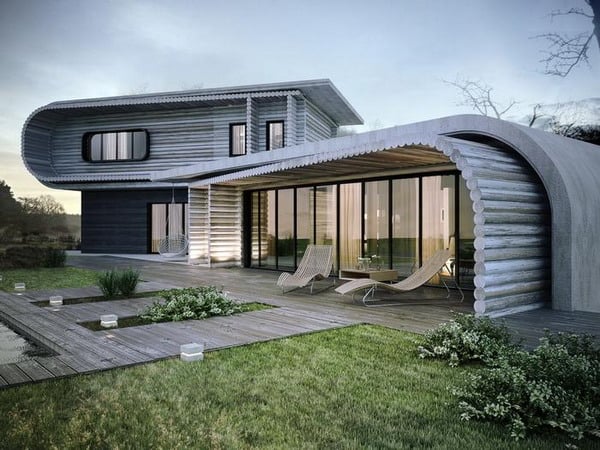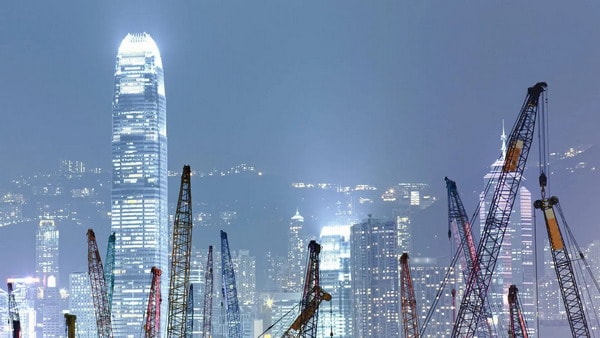
Green building, smart cities, drones, robotization – this is not a complete list of global trends that will intensify even more in 2024. In what direction is the global construction market going, and will the participants of the world market manage to keep up with modern trends?
1. “Green” building and reducing the carbon footprint
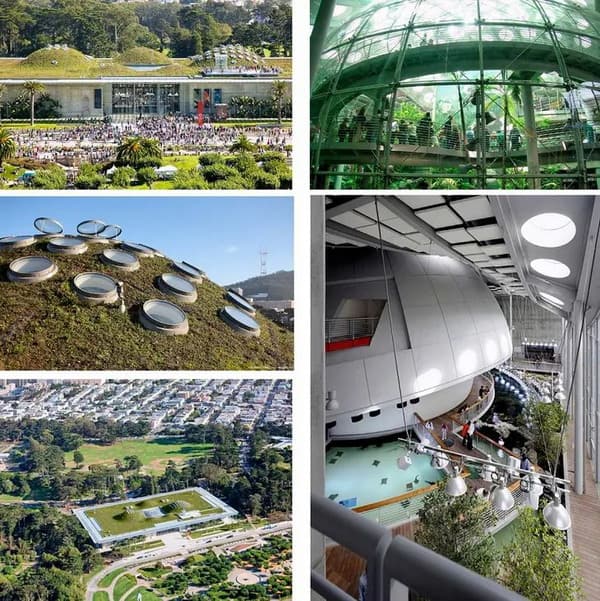
“Sustainability” is the strongest trend in the construction industry. Environmental responsibility is becoming increasingly important, bringing to the fore the minimum impact on the environment. “Green” technologies have touched both the construction process itself and the life cycle of the entire building.
World trends in construction are the reduction of carbon dioxide emissions, the efficient use of water resources and electricity. Innovative green building technologies make it possible to achieve savings of up to 40% of energy resources.
There has been a tendency to increase the volume of secondary reconstruction, reuse of waste in the construction of new buildings. The “green” solutions that are gaining distribution in the world include:
- Using eco-friendly bricks for building construction;
- The use of organic photovoltaic cells instead of solar panels;
- Arrangement of vertical gardens;
- Landscaping, equipping roofs with mini-parks, which contribute to thermal stability;
- The erection of light domes, allowing optimal use of daylight;
- Recycling: the use of recycled materials;
- Application of coal scrubbers for building facades
Now more and more developers around the world are moving towards green building, recognizing the benefits of environmental friendliness, including improved energy efficiency. Increasing the environmental rating allows you to increase the value of the object by 3-9%.
Unfortunately, in Russian realities, many eco-friendly features remain a luxury. The very term “sustainable construction” came to us relatively recently. Just last year, Decree No. 1628 of the Government of the Russian Federation was adopted, regulating energy efficiency requirements for buildings with energy efficiency classes from A ++ to G. And this is only part of the “green” building standard that the Ministry of Construction is working on. The main document on “green building” is planned to be included in the registers this year. The first houses designed according to the new standards will appear in 2023-2024, the Ministry of Construction notes.
Examples of green building in Russia include the metropolitan residential complex Life on Plyushchikha, which was the first in Russia to receive a LEED gold certificate. And the St. Petersburg tower “Lakhta Center” entered the top 5 largest green buildings on the planet in 2019. You can also note the complex “Otrada” in the Krasnogorsk district of the Moscow region.
The trend towards green building has already begun and in the coming years, eco-technologies will become more popular, although we are lagging behind the West in the spread of technology.
2. Artificial intelligence and machine learning
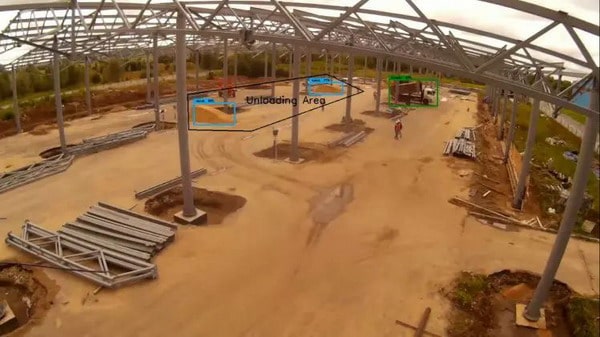
AI, also known as artificial intelligence, is actively used in construction. It is no longer a man, but machines endowed with artificial intelligence can build a wall of ceramic blocks. At the same time, the quality of such work is high, since the proportion of errors is low, and the risk of injury is minimized. Artificial intelligence can perform diverse and complex tasks, from finding design solutions to laying out communications.
In Russia, many companies have already turned to the use of artificial intelligence. For example, SGS is leveraging innovation in construction control by implementing an AI-based monitoring system.
The company FSK in St. Petersburg has automated the work with dynamic pricing.
AI makes it possible to specify various parameters, such as: control of the movement of vehicles at the facility, the rate of consumption of materials, for machine reading of documents, and more.
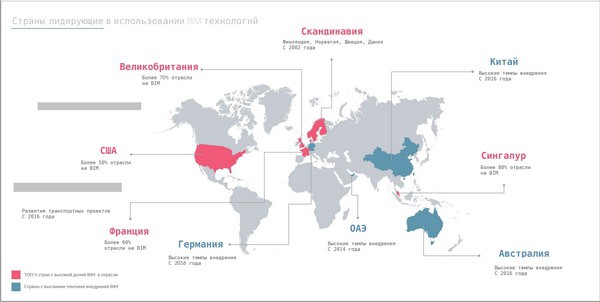
Information modeling technologies will continue to be used throughout the world. BIM allows you to find an integrated approach, create digital visualizations of buildings and engineering networks. According to Finances Online, the most popular BIM software solutions available in 2024 are:
- Autodesk BIM 360
- Trimble Connect
- Archicad
- Navisworks
- Revit
- Renga
Now the construction community is actively discussing the introduction of BIM modeling technology in Russia in 2024. Will the construction industry be able to fully go digital? Mostly, Russian companies use BIM level 1, although many already use BIM level 2. Starting from January 2024, the use of MI at the objects of the state order has become mandatory, regardless of the cost of the object. Participants in the construction market expect that government steps will push the development of the BIM market in Russia. In general, the rather low implementation rates of “digital modeling” indicate that the market is in transition and many companies are not ready to fully switch to new standards in 2024. But there is a tendency to revive the market.
Meanwhile, global construction trends are going even further: along with BIM, the technology of “digital twins” is also becoming in demand. When making changes to one section of the digital twin, you can track the impact of adjustments on both the object itself and the environment. This approach helps to detect “pitfalls”, errors even at the design stage, as well as to predict the development situation for decades to come.
4. 3D printing of buildings

Build a private house in just a day: this is the reality of the 21st century. 3D printing makes it possible to produce both modules and entire houses. At its core, construction 3D printing is most similar to monolithic construction. Human resources are not involved in construction: all work under the control of the operator is carried out by “smart equipment”, following a given program. By minimizing the labor force and excluding formwork from the production cycle, it is possible to save from 25% to 80% of the cost of a monolithic structure. At the same time, the production of such houses and modules is practically waste-free and contributes to the reduction of CO2 emissions. The maximum automation of the process reduces the construction time by at least one and a half times compared to traditional construction methods.
Main types of 3D printing:
- The principle of a desktop 3D printer. Layer-by-layer application of concrete by a robotic manipulator along a guide according to a given algorithm.
- Sand 3D printing. A layer of sand powder is distributed, after which it is “bonded” by a special substance.
- Robot welder. Such printing is used when it is necessary to create metal structures that carry significant loads. The technology allows to obtain metal structures in 3D along 6 axes.
Russia can be noted as one of the first countries that started work in this direction. At the government level, the Strategy for the Development of Additive Technologies has appeared, and small businesses are becoming the engine of the 3D printer of houses. The first residential building, the modules of which were printed according to the AMT-Spetsavia project on a 3D printer, appeared in 2017. Construction has also begun near Yaroslavl, where a village of 1.5 hectares is being built using innovative technology. The cost per square meter, according to preliminary estimates, is about 20 thousand rubles.
5. Modular construction
Modular construction continues to experience its multi-year “boom”, which does not slow down. According to experts, by 2025 the modular construction market will amount to almost $110 billion. The main impetus for the transition to modular construction is to reduce costs and reduce the use of labor. Many major international companies say they plan to reduce building site construction by up to 25% by 2025 in favor of modular construction.
The main advantages of erecting modular buildings are the speed of work and the reduction in the cost of building facilities. For example, the construction of the 15-storey building of the Ark Hotel in China took two days.
Modern buildings built using innovative technology are difficult to distinguish from buildings built using traditional technology. Modules are manufactured at the factory in a complex, fully equipping them with everything necessary, including lighting.
However, the COVID-19 pandemic has not spared the modular home industry, with some manufacturers closing. But in general, the trend of model construction will continue.
In Russia, in 2021, an important step was taken towards the development of modular construction. Rosstandart approved the set of rules “Buildings from large modules. Design Rules”. It became the first operating joint venture in this area. And they are going to develop a separate regulatory framework for modular construction in 2024. At the same time, in Russia, such approaches to construction are also possible with careful planning and the availability of sufficient space for construction. The economic component, according to experts, is also ambiguous: the final cost of the object depends on the modules themselves, but the choice of their suppliers is limited. There are also risks in terms of installation, production of modules and service life.
6. Smart Cities

Perhaps the most interesting trends in construction are the emergence of smart cities controlled by artificial intelligence. The world’s largest technology companies, such as IBM, Microsoft and Cisco, are investing heavily in mega-projects to create smart and sustainable cities. These cities have complex interconnections and require complex planning. The global smart city market is expected to grow by 20.5% to reach $2.5 trillion by 2025.
Among the most notable global mega projects under development are Masdar City in the United Arab Emirates, Songdo in South Korea, Hudson Yards in New York.
The Smart City concept is also developing in Russia. As a successful example, we can mention Sarov in the Nizhny Novgorod region, which is included in the top 3 smart cities in Russia. On-line, you can access city services: contact law enforcement or make an appointment at a polyclinic. In total, about 40 modules have been implemented.
We also note the example of using the Safe City APK in the Tyumen Region, where smart systems help monitor accidents, shutdowns, and control issues related to housing and communal services.
7. Use of drones at a construction site

Drones in construction are an integral trend in 2024. They help automate processes, avoid project cost rises and missed deadlines, compare estimates and work progress, and remotely monitor the construction process. Drones are used to survey the terrain, adjust building decisions, monitor construction site safety, and more.
These technologies find their application in Russia. However, in the West they are more widely used. For example, TraceAir, the developer of a web resource for monitoring construction based on drone data, notes that in Russia the main focus is industrial and road construction, while in the United States drones are mainly used in the construction of residential buildings. And for 5 months of 2020, the company’s revenue in Russia is three times less than in the United States.
8. Digitization
The transition to digital helps to improve the efficiency of planning and design, reduce errors and risks in the construction of construction projects. Moscow is already creating its own information ecosystem for participants in the construction market. It will unite officials and developers in an electronic system, give access to urban planning data, online services and public services. The StroiimProsto portal is already operating in Moscow, thanks to which construction market participants have access to a number of online services.
9. Robotics instead of humans
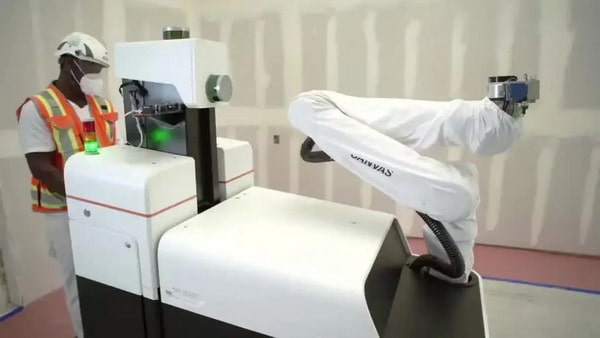
Robots are replacing people, and this is inevitable: these are technological trends in construction. In a pandemic, companies are thinking about a larger application of robotics. Mostly, we are now seeing this trend abroad. A robot with artificial intelligence builds drywall walls: this technique was used by the American company Canvas during work on the international airport terminal in San Francisco. This is just one example of the use of robotic equipment. Robots can be used in many processes: drilling, welding, brick laying, cargo palletizing, equipment maintenance.
The leaders in the use of robotics in various industries are Singapore, South Korea and Germany. Russia is still at the very bottom of the list with 5 robots per 10,000 workers, and construction is not the most robotic industry.
10. Mobile technologies for remote control
After the borders were closed due to the coronavirus and lockdowns, the question arose of how to work further. Customers have lost the opportunity to control the quality of the construction of objects, because they could not send their inspectors to the objects. Then there were remote audits. This technology was available before, but is not in demand. Now there is a reorientation of the market. Remote site auditing has become a practice in many countries. This requires high-quality video cameras and specialized mobile applications. Drones are also used for remote inspections.
Innovative technologies, full digitalization and the use of robotics at all stages – this is what awaits the global construction industry in 2024. And those participants in the Russian construction market who are the first to follow the construction trends will win.

